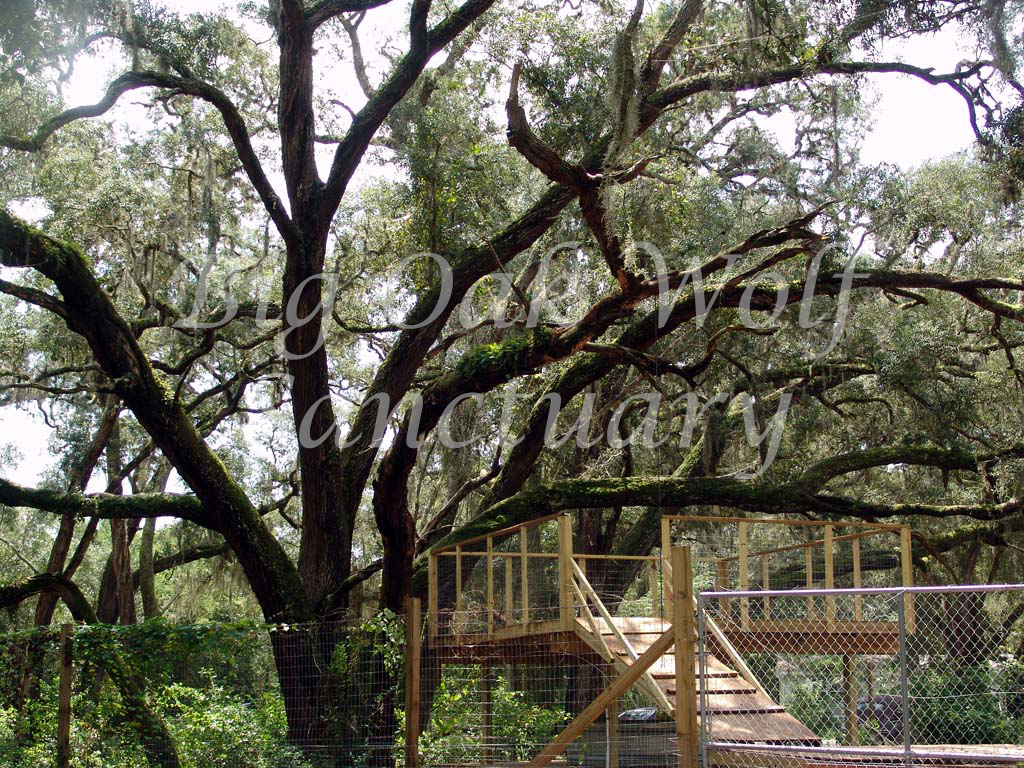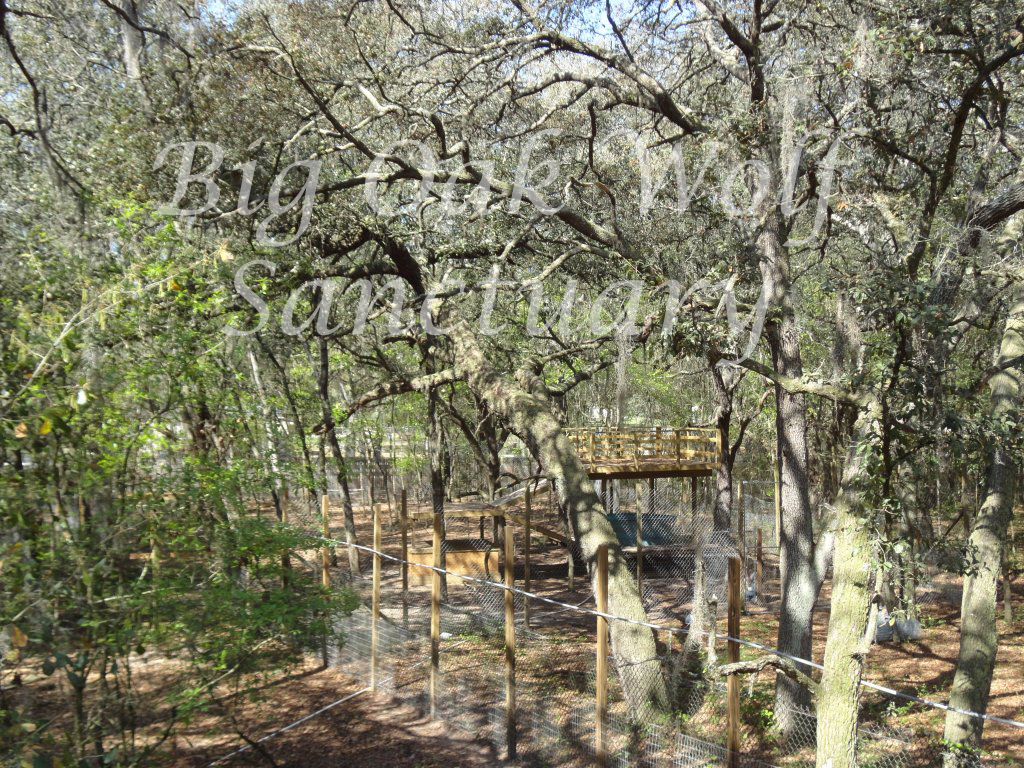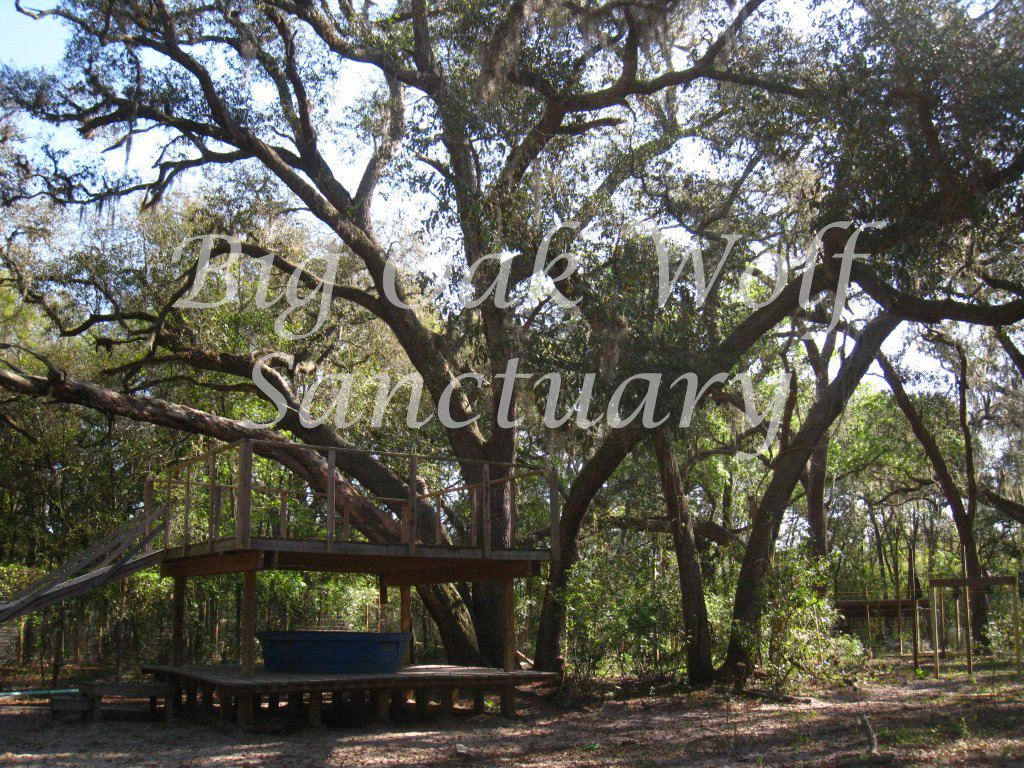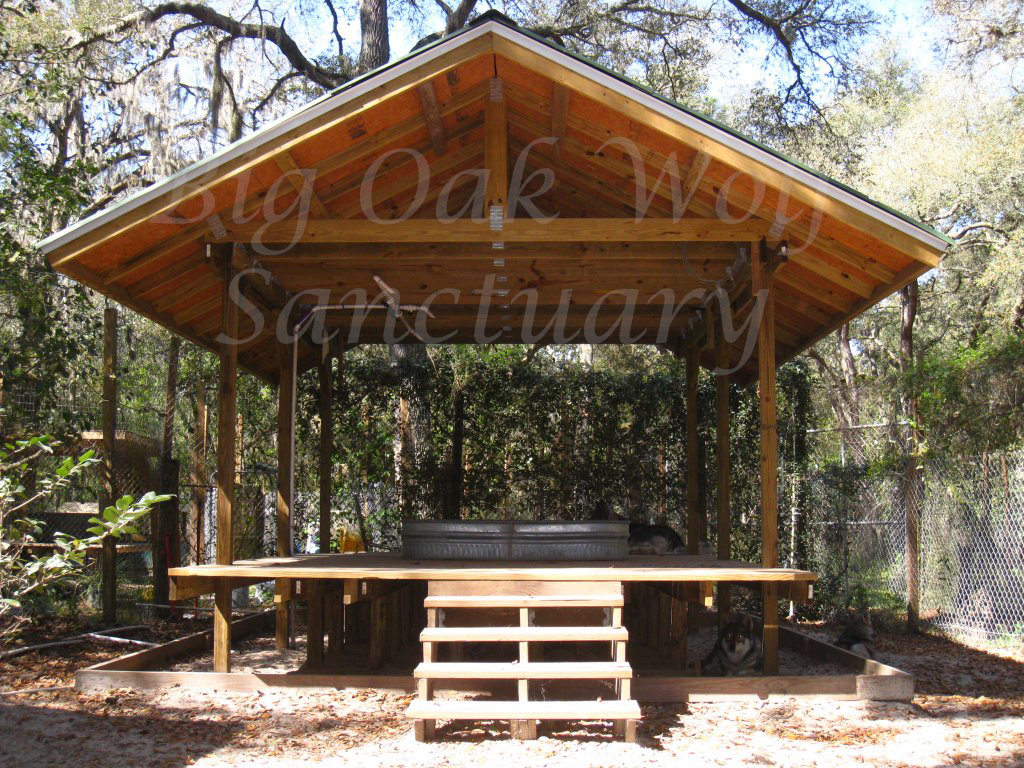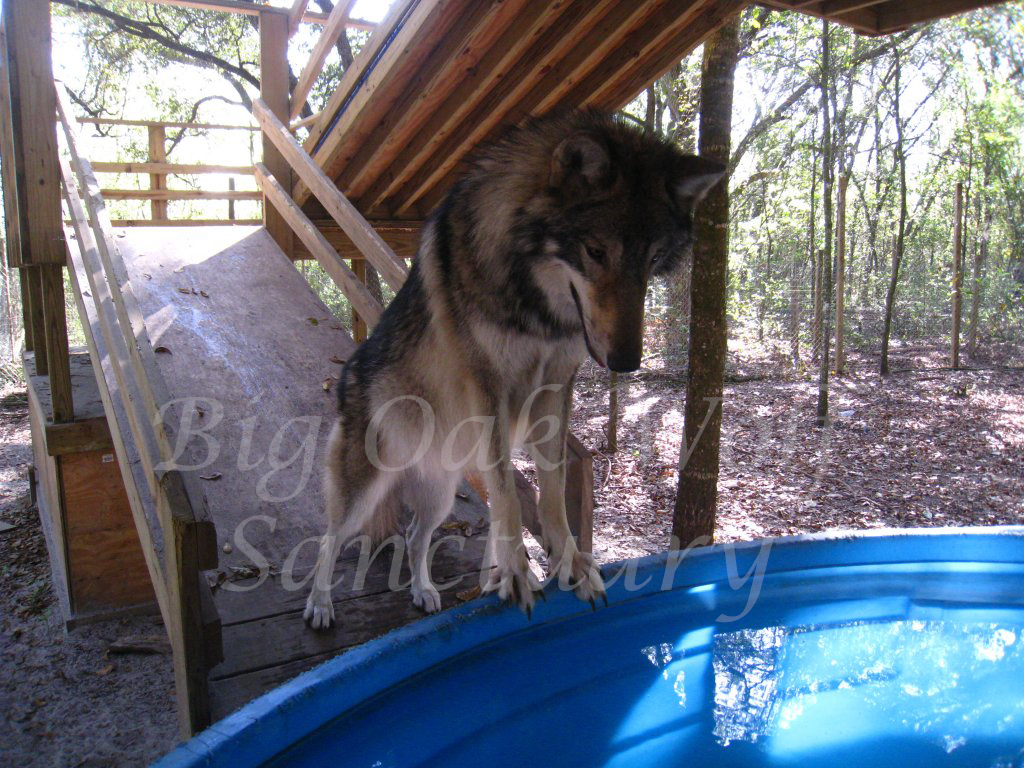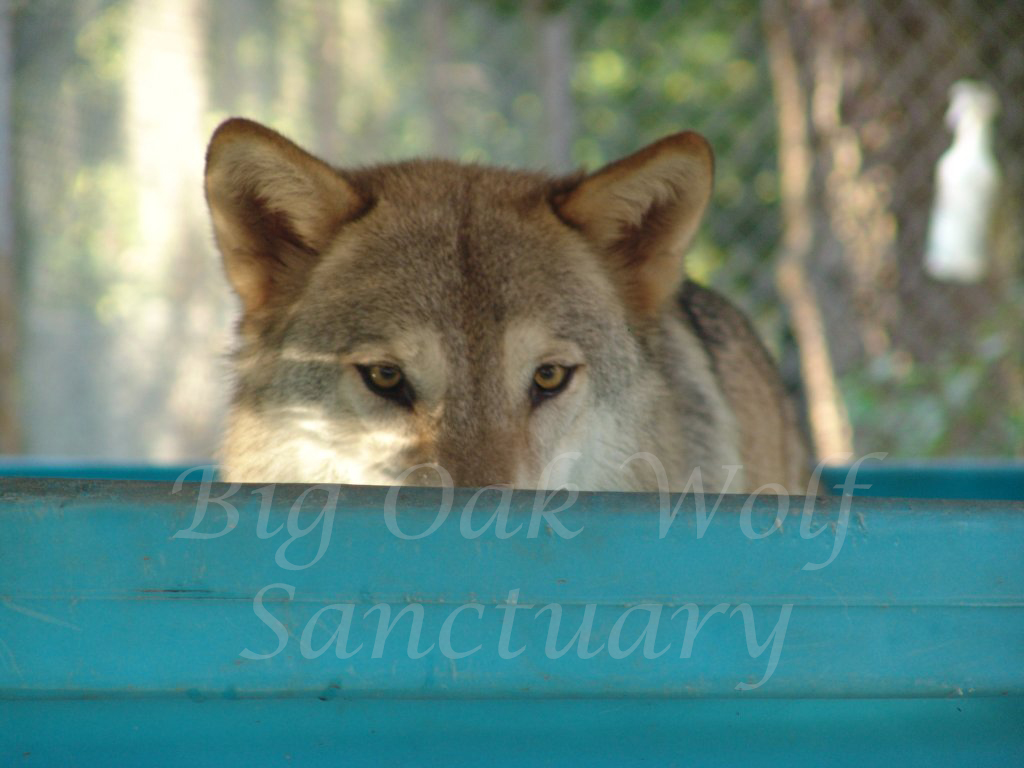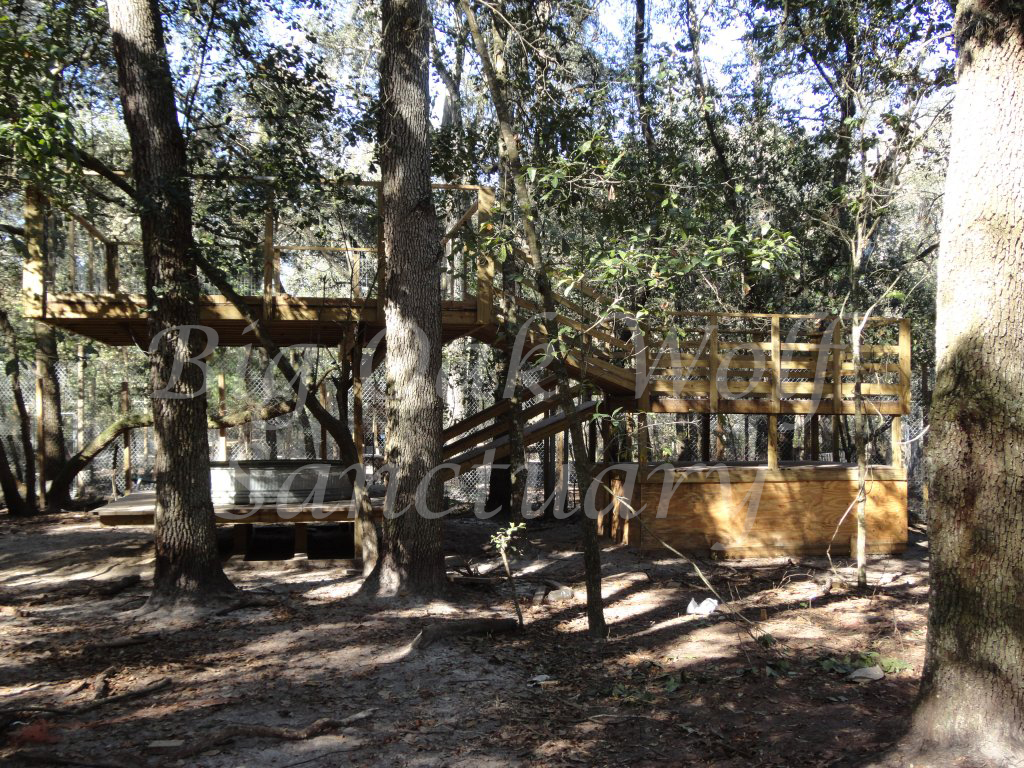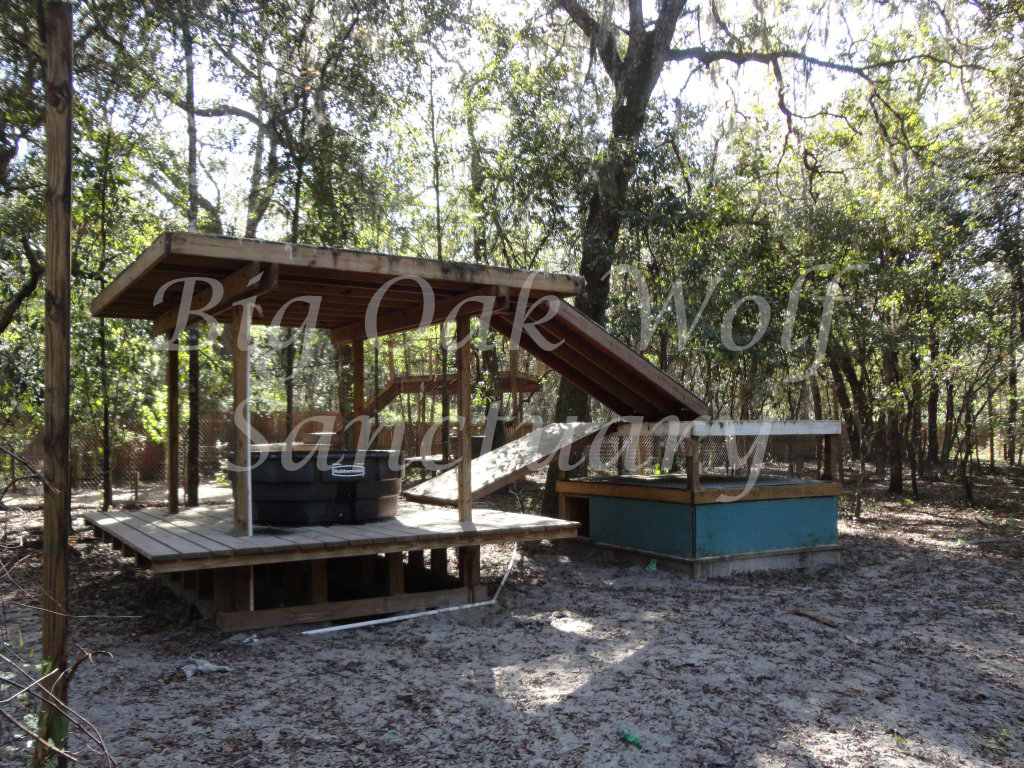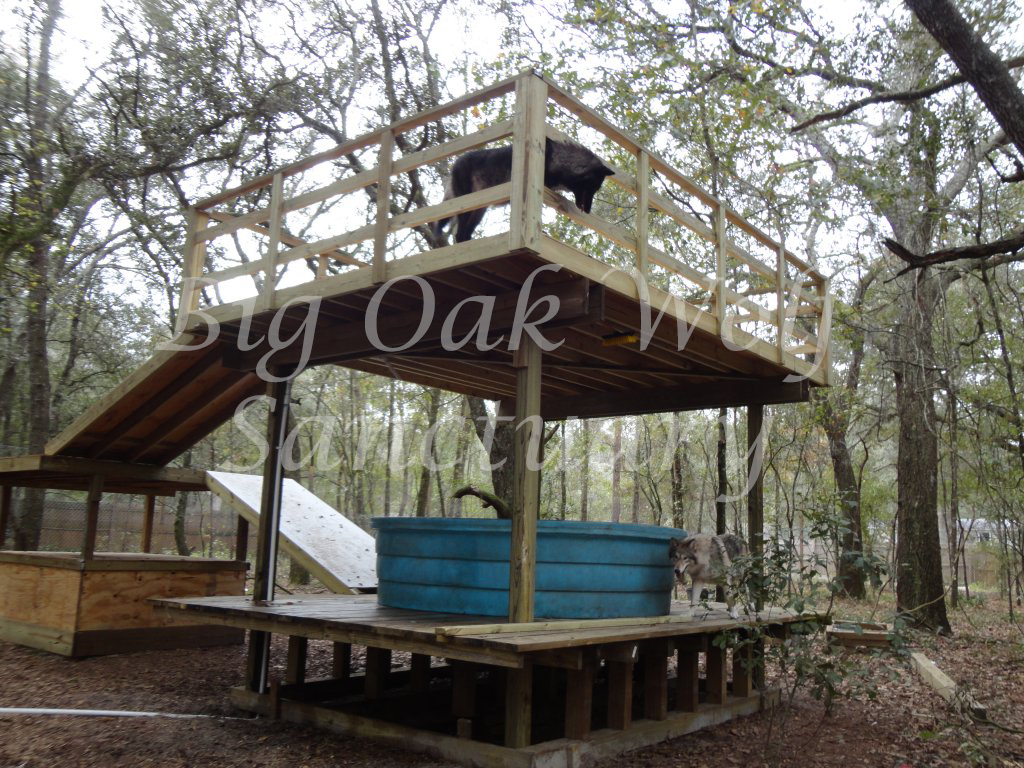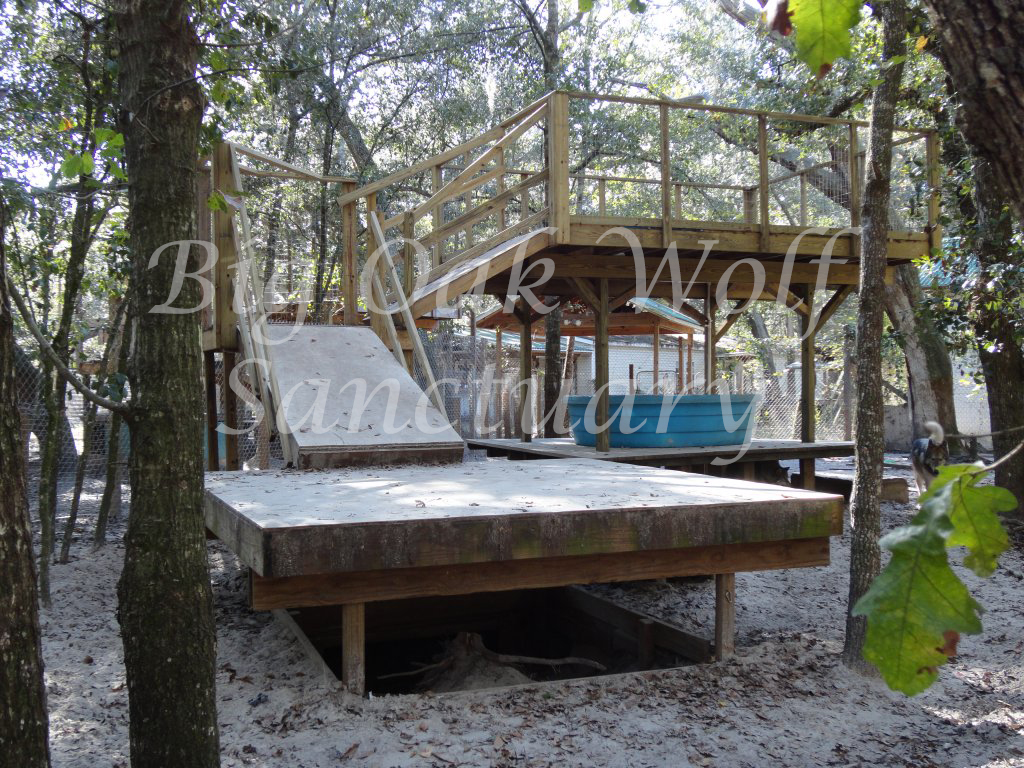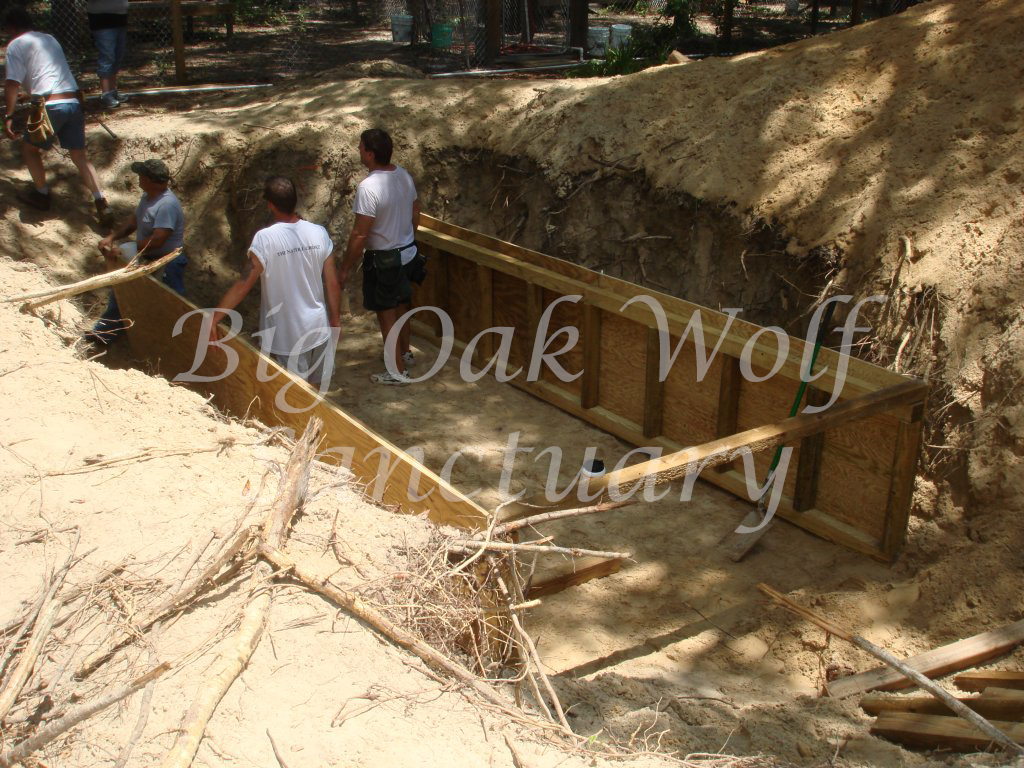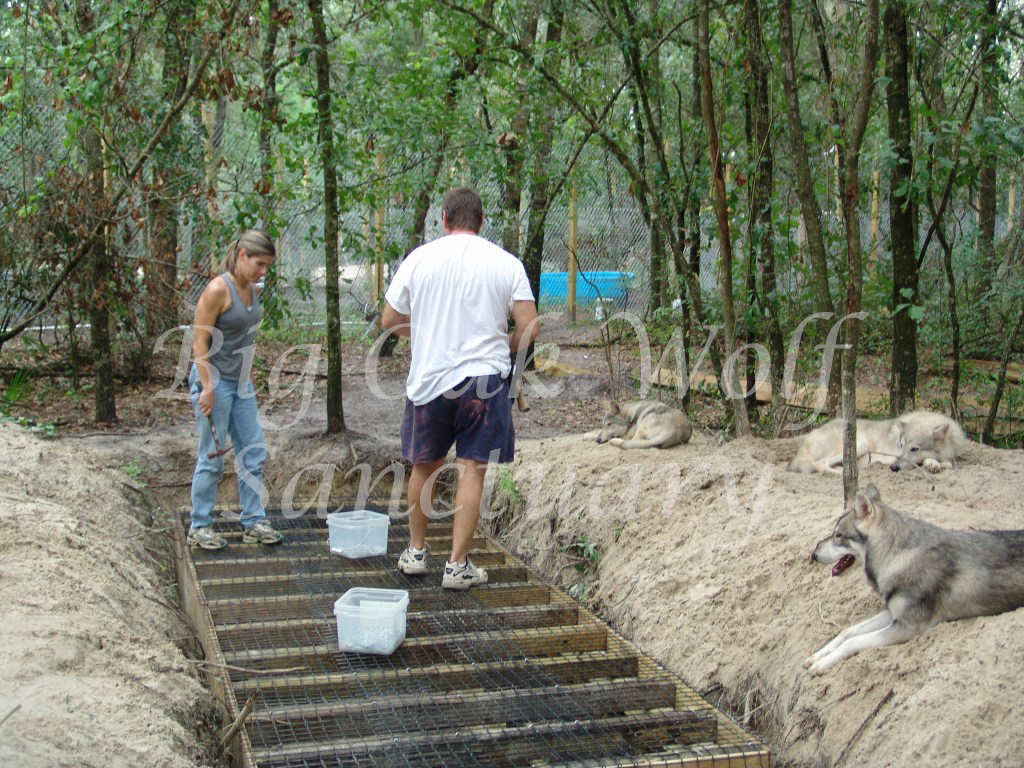The Sanctuary
Big Oak Wolf Sanctuary is a unique wolf facility designed to accommodate the rescued wolves here in the warmer, more humid climate of Northeast Florida. There are 21 wolf enclosures here, the sizes of which range from 5,000 square ft. (the smallest for the older ones) to nearly 30,000 square ft (for the younger healthier ones) and averages approximately 2.7 wolves/wolf dogs per enclosure.
The wolf accommodations in each enclosure are the most innovative and elaborate among wolf sanctuaries to date. Each wolf enclosure includes a 12′ x 12′ pool house (with pools ranging from 300 gallons to 930 gallons), 10′ tall platforms (ranging from 10′ x 10′ to 16′ x 20′) and either an above ground (8′ x 4′, 8′ x 8′ or 8′ x 12′) insulated den or a (4′ x 16′ or 8′ x 16′) underground den. The facility is designed and constructed to more adequately accommodate the rescued wolves in a climate to where they’re not indigenous. The innovative wolf accommodations here are designed to utilize the natural laws of physics in every way possible, in order to maximize the wolves’ comfort throughout the year, while preserving the square footage. This provides them with the maximum amount of (ground) space for running and playing, thus ensuring their quality of life here in captivity.
The Enclosures
There are 21 wolf enclosures here, the sizes of which range from 3600 square ft. (the smallest) to over 20,000 square ft. and accommodate from two animals per enclosure to five animals per enclosure.
The Pool Houses
The wolf accommodations in each enclosure include a 12′ x 12′ pool house with the pools ranging from 300 gallons to 930 gallons. The pools are covered by 10′ tall platforms ranging from 10′ x 10′ to 16′ x 20′ in size. By design, the pools are elevated with heavy construction, allowing the wolves to get under the pool houses where it’s cooler, while the 10′ tall platforms prevent the sun from heating the water in the pools. So the ground underneath the pools stays significantly cooler because it’s shielded by a large pool of cold water, which itself is shielded from the direct sun by the large platform above it. The pool houses also serve as areas for Human Interaction, Socialization and Enrichment.
The Platforms
As previously stated, the pools are covered by 10′ tall platforms ranging from 10′ x 10′ to 10′ x 20′ in size. Each platform (and the entire pool house) is positioned in a manner that protects the pool from the sun the entire day. The platforms are adjoined to the pool houses with heavy construction. They are positioned in an angle that takes into consideration the wind direction in the event of a hurricane, which would usually come from the southeast. So in addition to several other design specifications, this (strategic) positioning allows the structures to withstand the forces of strong winds coming from the southeast, from the position in which they have the greatest integrity.
The Dens
The underground dens here are designed to not only provide the wolves with a place to escape all uncomfortable weather conditions, but to serve as areas of refuge as well. The above ground (insulated) dens we constructed later for the new enclosures. They don’t offer quite the security of the underground dens, but they do the job just fine. (Especially when considering that all of the wolves seem to prefer the surprisingly cool temperature underneath the pools in the hot summer over the underground dens.) In the damp cold here, the above ground (insulated) dens are also filled with a massive amount of hay, which makes them more than sufficient for providing warmth when the wolves want it.
For the record, the innovations at Big Oak Wolf Sanctuary are not the result of any ingenious minds here; they’re simply a product of love and concern. Specifically, the wolf accommodations are the result of people who care enough about them to closely observe them year round, so their living areas can be designed and constructed based specifically on their preferences. Since wolves are not indigenous to the southeast, they have a difficult time tolerating the warmer, more humid climate here and the “damper cold” winters. Therefore, it is our responsibility to do what’s necessary here to help offset this for them, so they can take refuge from the elements when they so choose. Their comfort here in captivity is always on our minds so we’ll continue to improve on their accommodations as we learn from them.
